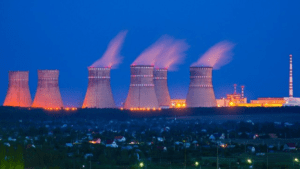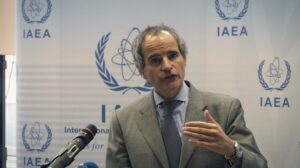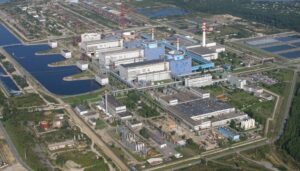
Moldova’s Ministry of Energy has prepared an energy strategy for the period up to 2050, which envisages a twofold reduction in electricity imports and a multiple increase in local generation, according to the country’s Minister of Energy, Dorin Jungiatu.
“We are striving to ensure that by 2050, more than 80% of electricity is produced locally from renewable sources (currently about 30%). The strategy envisages new connections with Romania and the European Union, an exchange capacity of 2,000 MW, and the availability of gas and electricity reserves,” he said at the presentation of the strategy. He is quoted by the state agency Moldpres.
According to Jungi, the modernization of the heating systems in Chisinau and Balti will be a priority. The authorities also propose to support the most vulnerable citizens with compensation, develop infrastructure for electric vehicles, launch electrified trains, and install 100,000 “smart” meters in households across the country by 2027.
According to mold-street.com, the cost of the measures planned in the strategy exceeds €41 billion, or more than €1.5 billion per year for the period of its implementation. The bulk of the investment—€17.5 billion—will be needed to transition from hydrocarbons to renewable and alternative energy sources, as well as to expand and modernize the electricity transmission system. More than €9 billion is planned to be allocated to the reconstruction and renovation of buildings and other energy efficiency measures. Another €8.5 billion is earmarked for increasing the capacity of electricity sources.
Overall, the strategy envisages reducing the share of energy imports in the energy balance from 77% to 40% in 2050 by reducing hydrocarbon consumption and completely phasing out coal by 2030.
It is planned that by 2050, Moldova’s own generation capacity will exceed 5,000 MW, doubling the current energy sources (including the Moldovan GRES in Transnistria). There are also plans to increase the capacity of wind farms 12-fold, to 2,600 MW.
At the same time, the authors of the strategy do not rule out the construction of a small modular reactor with a capacity of 300 MW in Moldova by 2050.

A mission of the international atomic energy agency has opened its presence at the Pivdenno-Ukrainian nuclear power plant, an Interfax-Ukraine correspondent reports.
The flag of the IAEA, in the presence of its head Rafael Grossi, was hoisted on the territory of the plant on Monday.
Grossi said the mission was badly needed because of the military situation in Ukraine.
“I am happy to be here. After Zaporizhzhia NPP, we are expanding our presence to other nuclear power plants in Ukraine. Today is the first step, and we will continue to work in this direction,” Grossi said after the flag-raising ceremony.
For his part, Energy Minister Herman Galushchenko welcomed the start of the IAEA mission, saying that it was important because of Russia’s aggression against Ukraine and the threats that the aggressor poses by terrorizing Ukrainians even on New Year’s Eve.
As reported, the IAEA announced the deployment of its permanent missions to three nuclear power plants in Ukrainian-controlled territory – in addition to the PAEC, the Khmelnytsky and Rivne nuclear power plants, and the Chernobyl nuclear power plant area. The IAEA permanent mission has been working for several months at the Russian-occupied Zaporizhzhia NPP, the largest in Europe.

The IAEA Director General announced the end of his “long-awaited” visit to the Zaporizhia Nuclear Power Plant (NPP) and the establishment of a permanent presence of the agency at the plant.
“I have just completed the first tour of the key locations we wanted to see in this first approach to the entire facility. Of course, there is still a lot to be done. My team remains, and most importantly, we establish our permanent presence from the IAEA here,” he said in a video from ZNPP posted on his Twitter.
Earlier, Energoatom, which includes Zaporizhia NPP, reported that as of 18:00 on Thursday, Grossi had left the station. Most of the members of the delegation left the station with him.
According to Energoatom, five representatives of the IAEA mission remained at the ZNPP, who are unloading the equipment they brought and will continue to work at the plant.
The IAEA mission arrived at the ZNPP captured by Russian troops on September 1, approximately after 14:00. According to the statements of the occupying authorities, the IAEA experts who left the station “should leave the territory controlled by the Russian Federation before 20:00.”

Ukraine has stopped power unit No. 1 of the Khmelnytsky NPP, which remained in operation after power unit No. 2 was taken out for repair, as a result of which only seven of the 15 existing power units are operating in the power system, the International Nuclear Energy Agency (IAEA) reported, citing the Ukrainian nuclear regulator SNRIU.
According to the IAEA’s daily report on Ukraine on its website late on Saturday evening, the agency explained the shutdown of the remaining power unit by taking it out for scheduled repairs.
“Seven reactors are operating in the country, including two at the Russian-controlled Zaporozhye Nuclear Power Plant, three at the Rivne Nuclear Power Plant and two at the Yuzhno-Ukrainian Nuclear Power Plant. Other reactors have been shut down for regular maintenance, including both units of the Khmelnytsky Nuclear Power Plant,” the statement said.
As reported, since February 18, KhNPP power unit No. 2 was shut down for scheduled preventive maintenance, lasting approximately 92 days.
According to the IAEA, power unit No. 2 of the Rivne NPP was recently put into repair, after which 8 out of 15 power units remained in operation.
Earlier, NNEGC Energoatom reported that three ZNPP power units were put into reserve after the station was occupied by Russian invaders, only one is under repair.
Khmelnytsky NPP consisting of two power units (VVER-1000) with a total capacity of 2000 MW is located in Netishyn (Khmelnytsky region).
In total, there are 15 power units in Ukraine equipped with water-cooled power reactors with a total installed electrical capacity of 13.835 GW.
The Rivne nuclear power plant on July 18 reduced the output of its power unit No.1 (VVER-440) to 50%, having disconnected the TG-2 turbo generator at 05:26 a.m. Kyiv time on Thursday, July 18, after the leakiness of the condensate electric pump line of a turbine unit had been revealed, National Nuclear Energy Generating Company Energoatom’s press service said.
The causes of the incident are being checked. The TG-2 turbo generator is to be put into operation before 02:00 p.m. on the same day.
Energoatom said the incident is rated as “zero,” according to the INES nuclear event assessment scale, or “out-of-scale.”
Thus, as of Thursday morning, 10 of the 15 power units of four operating Ukrainian nuclear power plants were in operation.

Chornobyl nuclear power plant has officially received a new safe confinement (NSC) for subsequent commissioning from Novarka.
According to an Interfax-Ukraine correspondent, the handover ceremony took place at Chornobyl nuclear power plant with the participation of Ukrainian President Volodymyr Zelensky on July 10.
Upon completion of the transfer process, the plant will receive a license and proceed to operating the confinement complex and dismantling unstable structures of the Shelter facility.
“To implement this stage, additional financial resources are needed, first of all, from Ukraine,” the State Agency of Ukraine on Exclusion Zone Management said.
Earlier on July 10 Senior External Affairs Advisor at the European Bank for Reconstruction and Development (EBRD) Anton Usov wrote on Facebook that “22 years after the Chornobyl Shelter Fund was set up, the new safe confinement has now been launched and handed over to Ukraine.”
The international community raised EUR1.5 billion for the project, Usov said. The EBRD invested over EUR700 million. The confinement will serve at least 100 years and help solve the problem of removing the ‘sarcophagus’ over reactor No. 4, he said.
The construction of the NSC over the old Shelter began in 2012 following massive preparations on the site. The project was carried out by Novarka Consortium.
Due to the massive size of the NSC it had to be built in two parts, which were erected and successfully joined in 2015. Inside the NSC arc is a crane for removing the existing old Shelter Structure, or ‘sarcophagus,’ and the remainder of reactor No. 4.
The NSC has a service life of 100 years and cost EUR1.5 billion to build.
Pre-installation work and individual and comprehensive tests on its equipment and technological systems were carried out at the plant’s industrial site in March. In late April, the NSC was put into trial operation. It will run experimentally for no more than a year, after which, depending on its performance, it will receive the relevant license and proceed to full operation and the removal of the old Shelter.